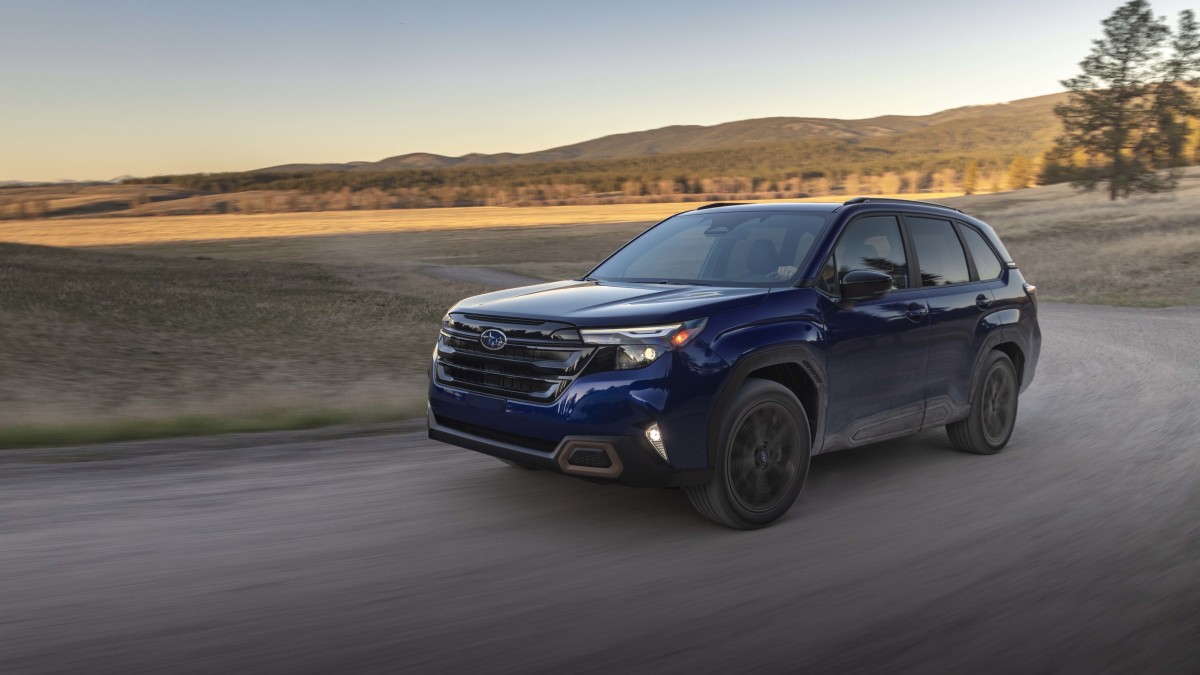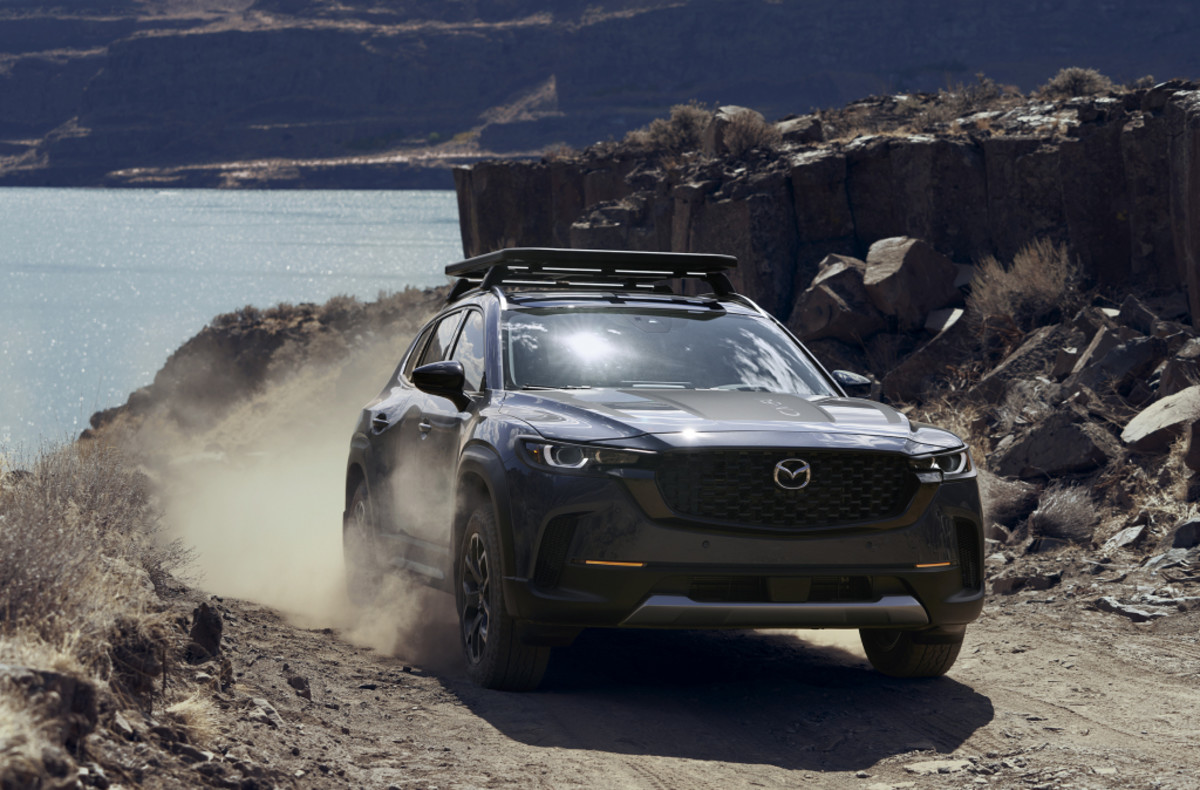The Toyota RAV4, Honda CR-V, and Nissan Rogue are often considered the sales leaders in the compact SUV/crossover segment. Other players like the Chevrolet Equinox, Ford Escape/Bronco Sport, Volkswagen Tiguan, and Hyundai Tucson tend to be overlooked, but they are still excellent in their own right.
I am personally quite fond of the Bronco Sport as it’s a hoot to play with, but for those who need a daily driver with a reliable all-wheel drive system, good safety, and excellent utility, the Mazda CX-50 and Subaru Forester should be your two picks.
Related: 2025 Lexus NX: 4 reasons to love it, 2 reasons to think twice
In a way, I have owned the grandfathers of both vehicles, a 2000 Subaru Forester and a recent Mazda CX-5. Both punched above their weight and spawned outstanding successors. What makes these two competitors similar but different enough to stand on their own?

Subaru
2025 Subaru Forester – the “sensible kid”
The recently updated 2025 Subaru Forester hits the streets, sporting a new kind of swagger. The interior and exterior forgo the staid vibe of the previous model with a tad more pop. It looks a bit more aggressive, but it’s still definitely a Subaru product.
It still has a 2.5-liter, horizontally opposed four-cylinder engine that sends 180 horsepower and 178 lb-feet of torque through a continuously variable transmission (CVT). We expect a more robust hybrid to enter the market later in the model year.
The EPA rated the 2025 Forester at 26 mpg city and 33 mpg, which is quite good for a non-hybrid vehicle in this class. My experience driving the previous model was that it was fine in traffic, but passing power takes a minute to get to full boil.

Subaru
The 2025 Subaru Forester brings many new improvements
In some ways, my gripes from the older model have been addressed. It borrows the steering rack from the WRX, which should help the steering feel, the interior looks better, and the exterior sports a more cohesive design.
Related: Six new features on the 2025 Lincoln Navigator
The best parts are its pricing and capability. Subaru prides itself on its AWD system, and rightfully so. Over the years, they have endeavored to improve it, and my recent experience says they’ve succeeded.
Base models get a 7-inch infotainment touchscreen, while all other models get the 11.3-inch unit. They also come standard with Apple CarPlay, Android Auto, LEDs, Symmetrical AWD, and a host of standard safety systems, such as automated emergency braking, lane-departure warning with lane-keeping assist, and adaptive cruise control.

Subaru
A hands-free power liftgate is also available, along with remote keyless entry and welcome lighting. Additionally, the package includes standard EyeSight Driver Assist Technology and Starlink.
Remember I mentioned pricing is a plus? The base model 2025 Forester starts at an impressive $29,810. There are five trims available, including Premium ($33,090), Sport ($35,890), Wilderness ($36,415), Limited ($37,390), and Touring ($41,390).
The off-road-themed Wilderness model is actually a 2024 model, which should be replaced soon. Other than the looks, I’d stick to the lower trims, as even the base model still has 8.7 inches of ground clearance and roof rails.

Mazda
2025 Mazda CX-50 – the “wild child”
Mazda tends to outgun most of the competition in terms of driving characteristics, and the CX-50 continues that tradition. Mazda has made Amazon’s Alexa and the 10.3-inch infotainment touchscreen standard throughout the lineup, and optional features have expanded as well.
The CX-50’s muscular looks, along with Mazda’s “horse and rider as one” philosophy, are strong. It is pleasant to look at and doesn’t blend in like others. I also love the long hood and the strong, blistered fenders.
Related: European automakers face a “perfect storm” as sales stagnate
Pricing is good unless you opt for the turbo. With the two powertrains, there are seven trims available in total, including Select ($30,350), 2.5 S Preferred ($31,650), 2.5 S Premium ($34,000), 2.5 Premium Plus ($37,500), 2.5 Turbo Meridian Edition ($40,800), 2.5 Turbo Premium ($41,300), and 2.5 Turbo Premium Plus ($43,300).
A hybrid will also be available soon, with its own trims and unique pricing.

Mazda
The Mazda CX-50 flexes its horses
The driving character of the CX-50 is lauded, and even the base model’s 187-hp 2.5-liter engine is fairly lively. It makes 186 lb-ft of torque and has a little more kick than the aforementioned Forester. Hooked up to a six-speed automatic, it delivers 24 mpg city and 30 mpg on the highway. They’re respectable figures, but the Forester is far more frugal.
Related: Drivers owe more than ever before on their trade-ins
If you want to giggle while you drive to work, I highly recommend the 2.5-liter turbocharged version. It makes 256 hp and 320 lb-ft of torque, connected to the same excellent six-speed automatic transmission and capable AWD setup. Power is effortless, and turbo-lag is minimal, but fuel efficiency drops to 23 mpg city and 29 mpg highway.
Steering feel and overall performance are a cut above average. Despite the high-tech driving system, the car feels a bit analog, which is a good thing. Honestly, it looks as good as it drives.

Mazda
Both cars provide something special
The Subaru is supremely easy to use with a family. It’s just that simple. If you are thinking about logic, safety, comfort, utility, and capability – the Subaru Forester must be on your list. Visually, it’s more pleasing than before as well.
On the other hand, if you want more style, gobs of fun with the turbo, and one of the most sure-footed vehicles in its class, the Mazda CX-50 fits the bill. I think it’s handsome too.

Mazda
Did I forget comfort?
Nope, but that’s because I’m having a hard time choosing between the two. The Subaru Forester has more usable space, and it’s more comfortable. On the other hand, the Mazda CX-50 has a much more visually appealing interior design and feels like a premium car.
Final thoughts
The Subaru Forester offers significantly more cargo space while maintaining a compact size. It navigates parking spots with ease and is quite fuel-efficient. The X-Drive system is also praised for its ability to handle tough terrain.
While the CX-50 is not quite as utilitarian and doesn’t share Subaru’s softer ride, it is sportier, and its i-Activ AWD system is extremely adaptable to all weather challenges. The interior and exterior look more distinctive, too.
Both vehicles are fine choices. I would go as far as to say they are better than the sales leaders in many ways. At the very least, they are both worth comparative shopping.
Related: A Ferrari mechanic crashed the world’s highest mileage F40